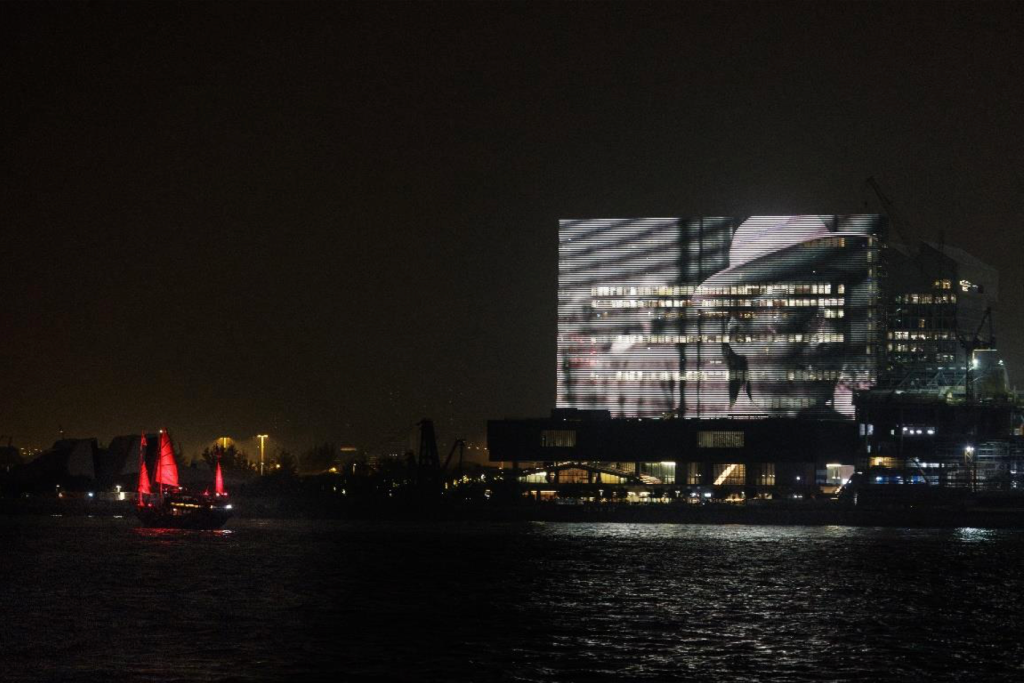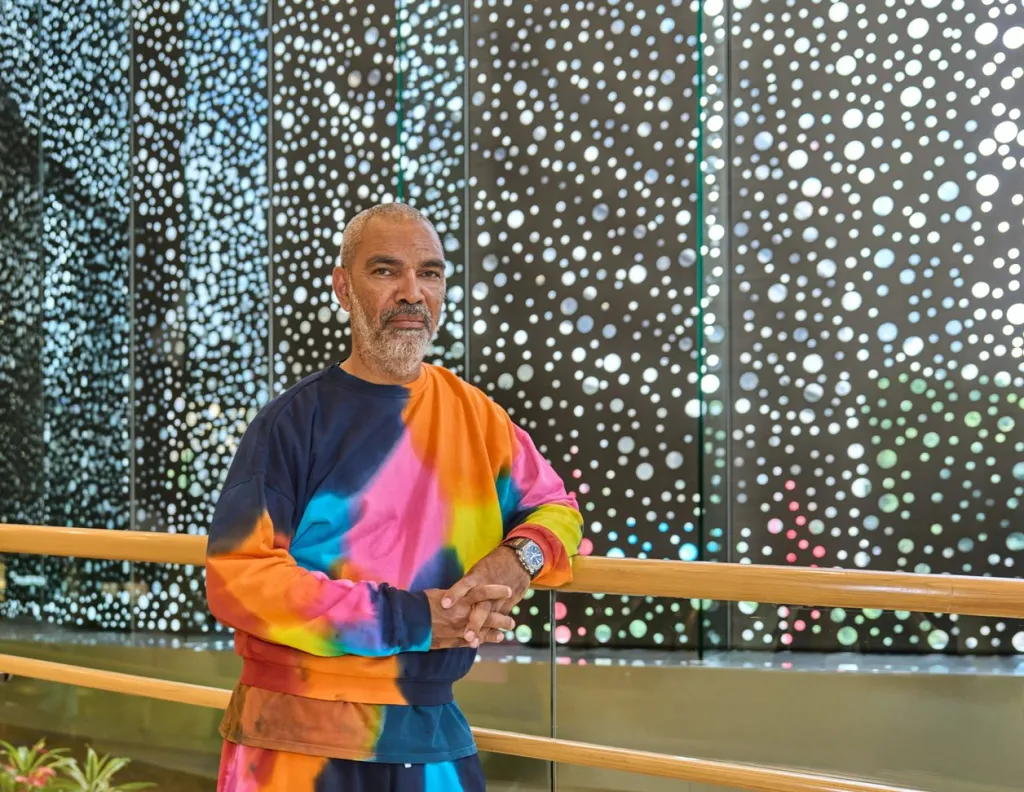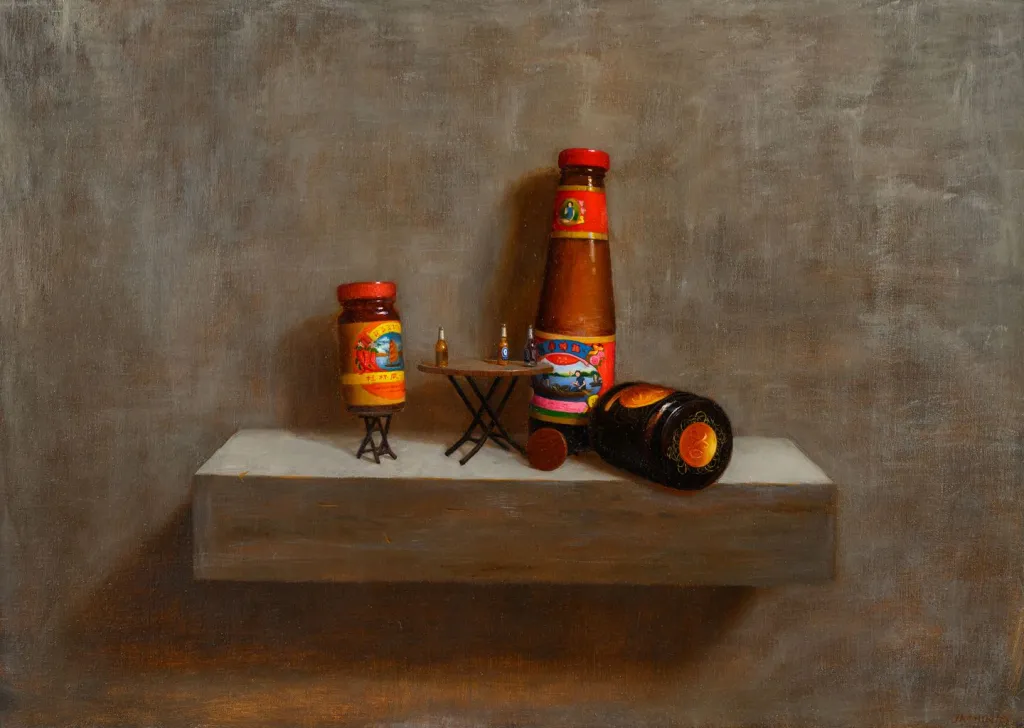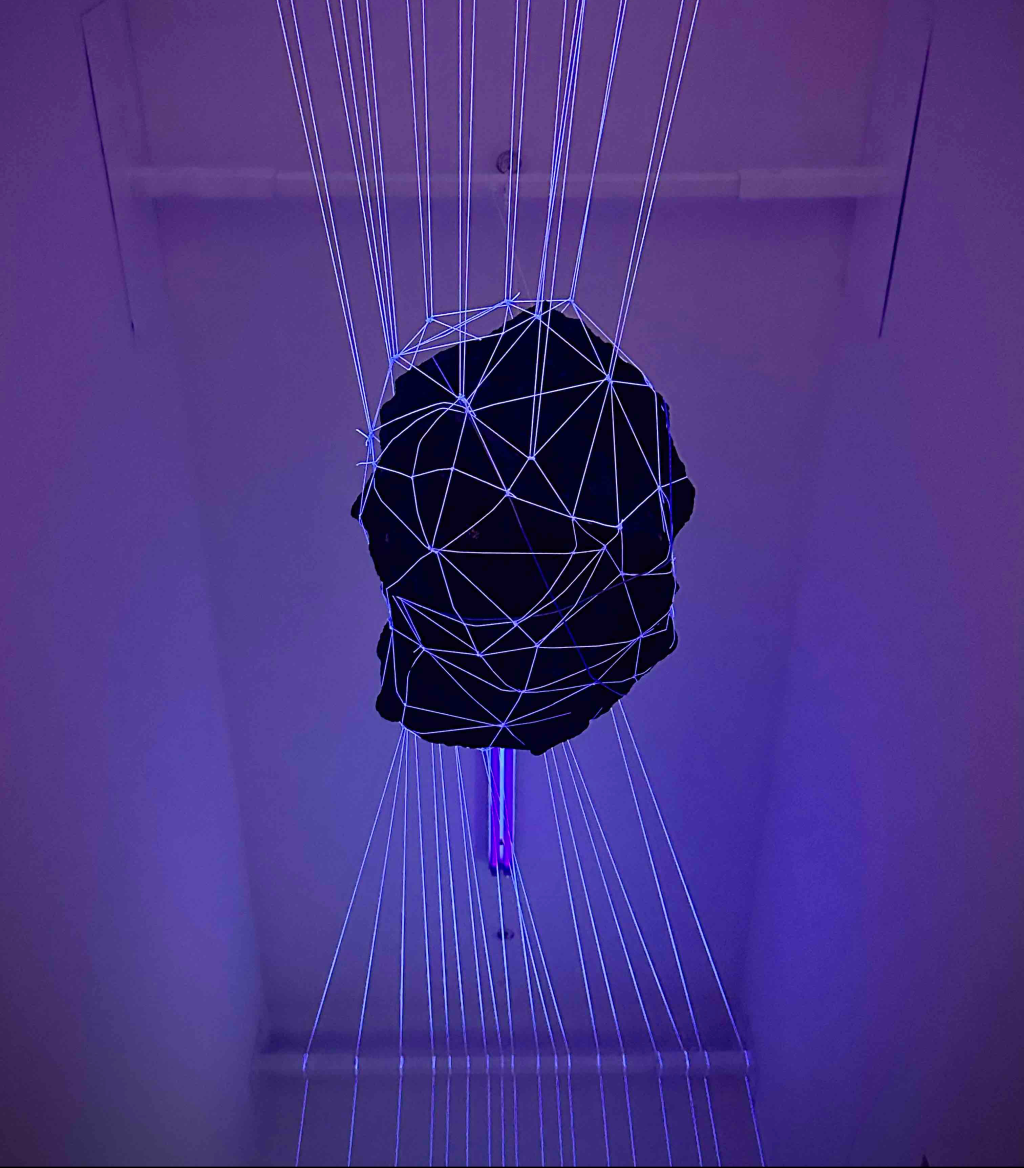I’m standing under Michelangelo’s Sistine Chapel fresco, ‘The Creation of Adam’, craning my neck to see Adam and God’s outstretched near-touching hands. But the faces I’m looking at are identical and Chinese–it is the face of celebrated Hong Kong artist Chow Chun-Fai. And I’m not in the Vatican, I’m in the artist’s Fotan studio.
Fotan is one of Hong Kong’s oldest industrial art outposts and the site of the Fotanian art movement, started by Fai and a group of artists over a decade ago. “I have been here since 2003 when there were only five or six studios. We all started the Fotanian open studio,” he says of the annual open studio event in Hong Kong. The building contains a warren of studios, book printers, and soap manufacturers. Outside green shrubs and vines cascade down the mountain making for picturesque scenery, a quiet contrast to the chaos and activity that usually reigns within the walls of the surrounding industrial buildings.
In the artist’s 10th floor studio, bookshelves line one wall, groaning under the weight of hundreds of volumes in Chinese and English, while across the room towers of DVDs form a colourful plastic metropolis. There are piles of Hong Kong films, and a collection of Nouvelle Vague films by Godard and Truffaut. Text and film is what informs a number of Fai’s paintings. The artist’s paintings draw on movies and subtitles to add what he calls an ‘inter-textual’ element. Works in various stages of development are littered around the studio; they hang from walls, lie on tables, and sit on shelves, while before us dozens of pots filled with multi-coloured paint sprawl across a work table. Fai always works on several pieces at once–some draw on scenes from films, others are based on photos of Hong Kong.
Fai, all cherubic smiles and serene exterior like a Buddhist monk, is very much a Hong Kong artist. Born, bred, and educated in Hong Kong, the city’s urban landscape was introduced early on in his works. He was once a part of this urban landscape itself, driving one of the iconic red Hong Kong taxis around the city’s streets day and night for eight years after his father had a stroke. Toy cars, photos, and paintings of taxis, are dotted around the room, hinting at the artist’s former occupation. He incorporates this experience directly into his work. “I took photos in my daily life. This is why I have so many taxis in my work. I owned two taxis and drove taxis. That one there [pointing to a painting] was my taxi…2873. I took photos from my daily life and turned them into paintings. Even as a student the lens was important tool for my painting. In my MA course I tried to reverse the process and started with a painting and turned it into a photo–like the Sistine Chapel work above us.”
Fai calls himself a research-based artist. Recently he has been consumed with research into the methods and technology of Vermeer and Caravaggio, reproducing works like the ‘Supper at Emmaus’ (Caravaggio) to better understand the artists’ projection process. Both Vermeer and Caravaggio fixed projections onto their own canvas. “Caravaggio may have been the first to have used lenses in his work,” the artist explains. “Vermeer too could have used lenses to project in the dark, using a camera obscura. But all you could do is sketch, not paint because it would be so dark. For Caravaggio, he probably used silver mercury on the canvas to fix the projections. These are the first elements in photography,” he explains. “I use projections to create these works, and that’s the way Caravaggio worked. I use them for the sketch, projecting the video on the canvas.”
The figures in the Sistine Chapel and the ‘Supper at Emmaus’ works are actually dolls, with Fai’s face superimposed over their heads. “Caravaggio used models, and I use toy models…these are GI Joe soldiers. I took photos of all these toy figures and also of my face,” he explains. The works are actually composed of hundreds of tiny pieced together photo fragments, giving the impression of an enlarged pixilated image. Fai fluidly moves between the two media, painting and photography, without laying claim to either. “I’m not a professional painter or photographer–I’m doing something in between painting and photography”, he says. “Even in my paintings, I’m not using the traditional technique of oil–I use industrial paint instead. At the same time I think it’s a good way to escape all those boundaries of traditional material. So in one way I’m traditional in my reach and the experiments of the Old Masters, and on the other hand I try to escape what they did.”





































You must be logged in to post a comment.